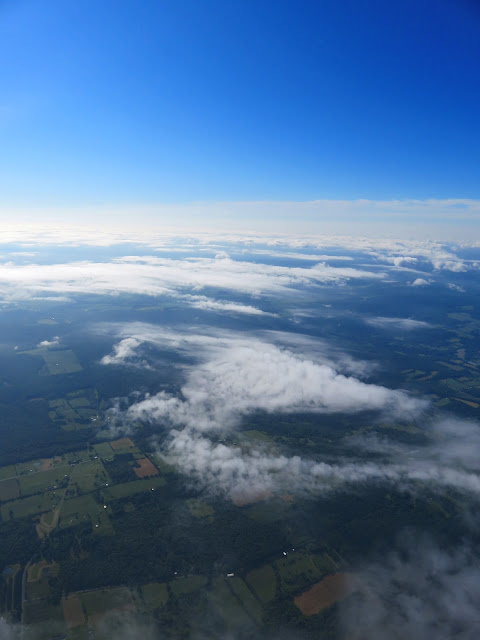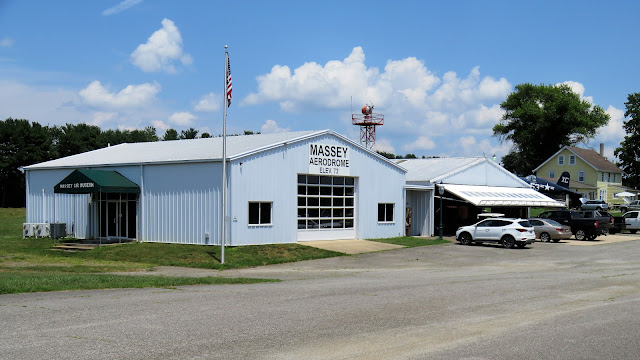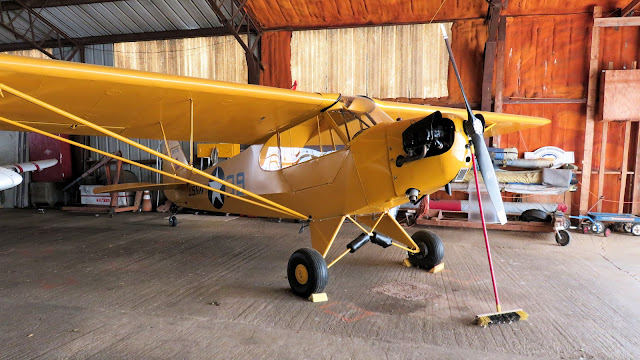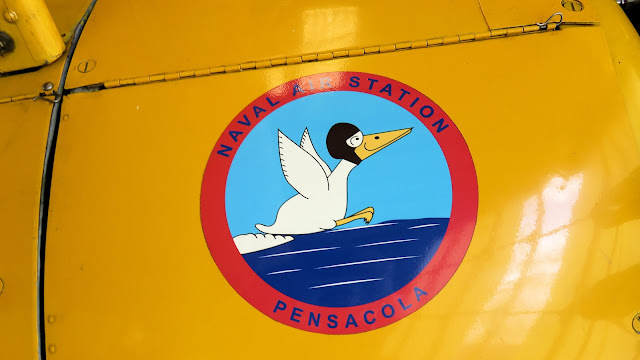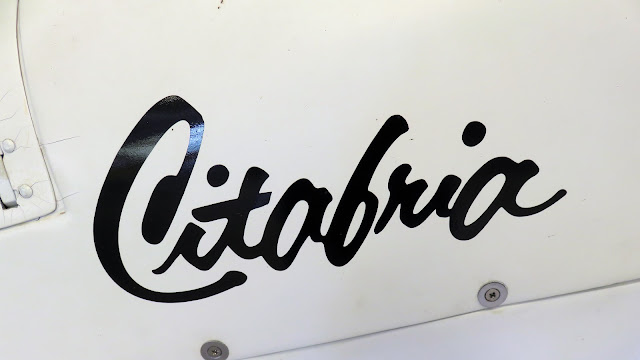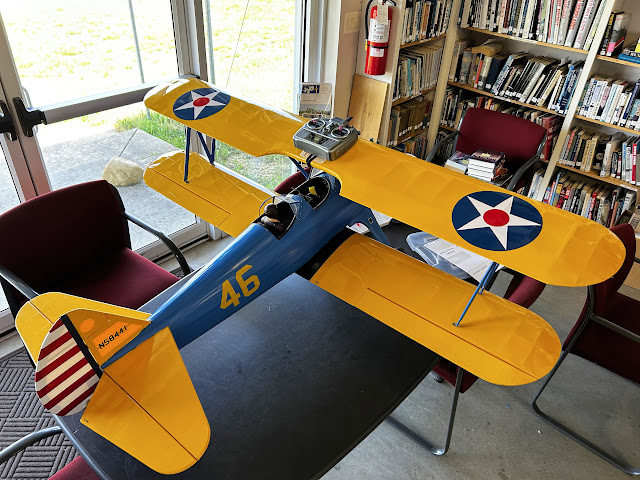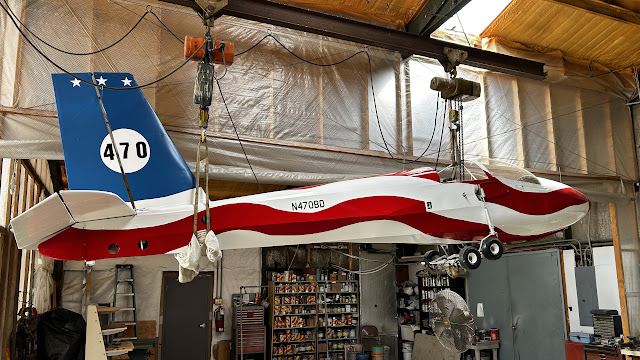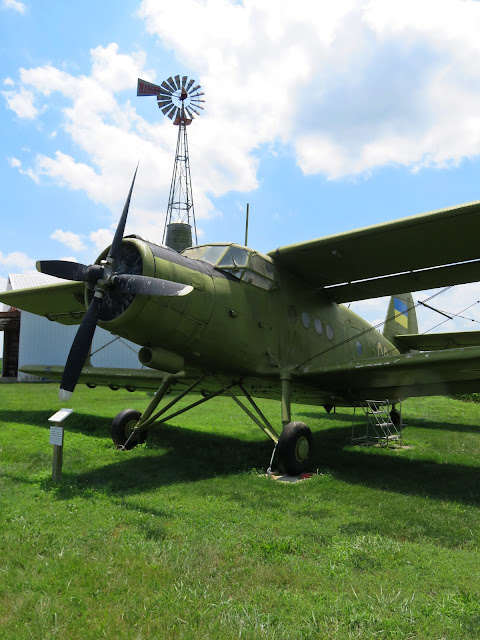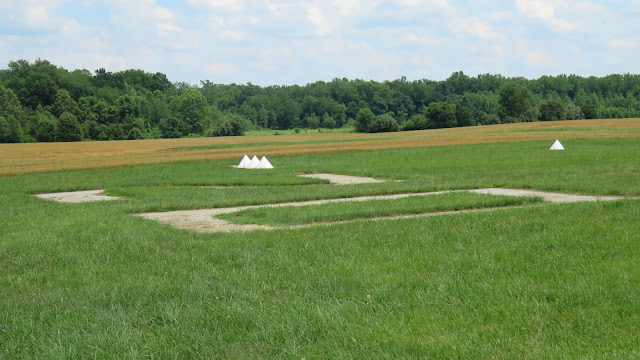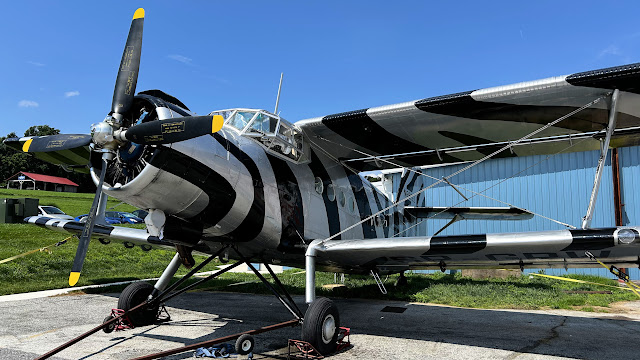"Hi...I'm in Delaware."
- Wayne Campbell, Wayne's World, 1992
Restless Pilot Syndrome
Having resumed acting as pilot in command of my own airplane after a relatively brief setback, I was delighted beyond words to be back at it. But something was still missing and despite a few trips with the Williamson Flying Club (for example, to the Piper Museum in Lock Haven), I realized that I craved exploration, one of my greatest joys in aviation. In fact, I had not investigated a new (to me) destination since sometime in 2024.
During the fall of 2024, I planned a flight to Massey Aerodrome (MD1) in Maryland that I cancelled due to weather. Massey Aerodrome is a place often romanticized by the aviation media for evoking deep, grass roots nostalgia for pilots. In other words, it seemed to be my kind of destination. June 29, 2025 was a perfect day to go exploring. Because there is no access to food at Massey, I searched the surrounding airports for restaurants and found two that were well-reviewed: Sugar Buns Airport Cafe on the field in Easton, MD (KESN) and Arena's in the terminal building at Delaware Coastal (KGED) in Georgetown, Delaware. Delaware is the only state on the eastern seaboard that I have never visited and so the plan practically created itself. Both Massey and Delaware Coastal sit on the Delmarva Peninsula that is defined by the Chesapeake and Delaware Bays and is named for its odd partitioning of land between the states of Delaware, Maryland, and Virginia.
Buttonology as a Key to Instrument Proficiency
| Date | Aircraft | Route of Flight | Time (hrs) | Total (hrs) |
| 29 Jun 2025 | N21481 | SDC (Sodus, NY) - GED (Georgetown, DE) - MD1 (Massey, MD) - EVY (Middletown, DE) - N57 (Toughkenamon, PA) - SDC | 6.6 | 3007.4 |
 |
| Geneva, NY and the north end of Seneca Lake. |
Thanks, Bob!
When I was passed to Dover Approach, the controller was handing off another pilot in Grumman 716ER. The tail number caught my ear as familiar and when the mental gears finally meshed enough to process that it spelled out "Tiger", I realized that I was hearing Bruno from Fly with Bruno who was out doing what Bruno does.
From above, the existing configuration of Delaware Coastal Airport (GED, #286) suggested that it once possessed three main runways arranged in a triangular fashion consistent with mid-20th century military airfields. Although the wind was out of the west and favored runway 28, two aircraft were performing touch and goes on runway 22 and I followed suit because it was just easier that way.
I was partway back to the terminal building when he called back to tell me that a tour was already scheduled a couple of hours later if I wanted to wait around. I thanked him for letting me know, but decided to continue on to Massey Aerodrome instead. I mentally added it to the list.
Set among the farms of eastern Maryland, Massey Aerodrome in an aeronautical anachronism that welcomes all comers with open arms. With a well manicured 3,000 foot long grass runway (02-20), an antique windmill, an old-style rotating beacon, and a multitude of vintage aircraft including a 1937 DC-3 as a centerpiece, Massey Aerodrome evokes nostalgia for the rural airports of decades past. Massey hosts the annual Antique Aircraft Association fly-in that was most recently held on June 21 of this year and attracted 80 fly-in aircraft, including a Pilatus PC-12 (not very antique, but a novel thing to see on a grass runway). One might be forgiven for thinking that Massey Aerodrome is a time capsule carried over from the 1940s, existing in a bubble that somehow resisted the passage of time. But the fact of the matter is, Massey was created by a group of four aviation enthusiasts in 2001 who repurposed the farmland into an exquisite grass runway. In addition to being a locus for flying vintage aircraft and pilot camaraderie, Massey is also home to a small aviation museum.

Airplanes fill a pair of large hangars, with the east hangar (left) occupied by tenant aircraft and the west hangar (right) sheltering aircraft belonging to owners of the field. Within those hangars, I found a number of treasures.
New Garden was quite active for a sweltering Sunday afternoon. Set across an undulating landscape of varied elevation with a runway that had been deliberately raised and leveled paired with a parallel taxiway that had not, the airport facility appeared to have grown almost biologically, spreading where it could across the available challenging terrain. In some cases, hangars sat at a higher elevation than the runway, in others, well below. A mixture of fixed wing powered aircraft operated in concert with gliders departing and landing on grass along the south side of the runway.
A lineman assisted with pumping the self-serve fuel, pegged me as new to the field because I obviously had no idea where anything was, and kindly explained anything that I asked about.
As I flew southbound over the Finger Lakes, a dense layer of clouds completely obscured the ground.
Northwest of Allentown, the inevitable IFR re-route was issued by ATC. I had filed from Sodus direct to Delaware Coastal via the ELZIE intersection to avoid restricted airspace. Philadelphia clearly wanted me on a more defined airway route as I passed west of the city. Allentown approach re-cleared me to Delaware Coastal from my present position via East Texas (ETX), Victor 29, Smyrna (ENO, just north of Dover AFB), then direct. I momentarily put HAL into heading mode, inserted the East Texas VOR into the route, programmed GPS direct to ETX, then switched back to "nav" mode to avoid any unexpected turns from tinkering with the active leg in the GPS flight plan. This was a lesson learned in 2024 while coincidentally receiving another reroute near Philadelphia. Once on course to East Texas, I plotted the waypoints defining Victor 29 in Foreflight and inserted all of them into the GNS-430 flight plan. It kept me busy for a few minutes.
I passed west of the city of Philadelphia, tracking southbound over the west bank of the Delaware River. Between the clouds and the haze, I never actually saw downtown Philly.
Have Fun Storming the Castle!
The new routing took me directly over the Wilmington (charted as New Castle) Airport, host to Air National Guard operations on the northeast ramp. It appeared to be well-populated with versatile Air Force C-130 Hercules cargo ships.
 |
| Delaware River. |
Although I have been flying in the Northeast for many years, I had never flown over the state of Delaware or along this portion of the Delaware River. The route managed to be wholly novel while still feeling familiar.
Some of my favorite flying moments include spotting something unusual beyond the acrylic. I definitely did a doubletake when I saw what appeared to be a castle -- complete with moat! -- on a remote island in the Delaware River.
Bluntly yet vaguely charted on the sectional as "fort", Fort Delaware on Pea Patch Island is essentially an American castle with a moat. Constructed in 1859 to protect the Delaware River ports of Wilmington and Philadelphia, the enormous facility once housed 10,000+ captured Confederate soldiers during the Civil War. In 1944, the fort was abandoned by the US government and became a Delaware state park in 1951.
 |
| Delaware River. |
 |
| Delaware River. |
Meanwhile, Seven Miles South of the ARLFT Waypoint...
 |
| Dover AFB. |
Dover Air Force Base was the last ATC facility I spoke with before cancelling IFR and setting up to land at Delaware Coastal. Dover is considered the Department of Defense's largest aerial port, it is home to 11,000 servicemen and women and their families, and is responsible for global airlift operations utilizing C-5 Galaxy and C-17 Globemaster aircraft.
Although Dover Approach was busy with various general aviation flights in the area, the Air Force Base itself seemed quiet. A cadre of cargo planes were parked below, my best guess is that they were C-5s because C-17s should have visible winglets.
Also attached to the base is the Air Mobility Command Museum.
I call this feature a "B-52 tree". Parking areas like this on Air Force bases are generally reserved for the largest of aircraft, but each spot was essentially empty the morning I flew overhead.
BS at Delaware Coastal
 |
| Delaware Coastal Airport (KGED). |
From above, the existing configuration of Delaware Coastal Airport (GED, #286) suggested that it once possessed three main runways arranged in a triangular fashion consistent with mid-20th century military airfields. Although the wind was out of the west and favored runway 28, two aircraft were performing touch and goes on runway 22 and I followed suit because it was just easier that way.
The ramp was quite large and there were aircraft parked in multiple locations. I chose a set of recently rehabbed tiedowns and parked there next to a Cirrus Vision Jet bearing a registration number ending in "BS". I wondered if this was a message of some sort and suspected that I was not clever enough to understand it.
I entered the terminal building near a refueling jet and asked one of the FBO staffers if I was parked in an appropriate place. When I pointed toward the tiedowns I had chosen, he laughed and said, "Those are our new transient tiedowns, which makes you the smartest person to arrive here this morning!" His quip was clearly more commentary on that morning's arrivals than anything I had done.
After a brief wait, I entered Arena's at 11:00 am right at opening. The restaurant was spacious and well-appointed with long booths that were perfect for larger groups. These were set along windows with an outstanding ramp view. It was everything an airport diner should be. While I waited, I read up on the history of the airport.
My initial guess was correct, the facility was constructed by the military over eight months during 1943. It was configured with three 5,000 foot long runways in a triangular arrangement. During World War II, it was used as an auxiliary training field for the Wildwood Naval Training Station located across Delaware Bay in New Jersey. Over the following two decades, it was home to All American Engineering, a firm that designed aircraft catapult and arresting gear systems. Walls of a terminal building hallway are plastered with historical photos of All American Engineering projects being tested at the airport.
“When I Try to Get Through on the telephone to You, There’s Still Nobody Home”
I also discovered that the Delaware Aviation Museum was on the field, home base for the B-25 bomber known as Panchito. How did I not know this already? I was familiar with Panchito because it is one of the better known surviving WWII B-25 Mitchell bombers still flying on the eastern seaboard and I am certain that I have seen it at Geneseo before. Per their Facebook page, the museum is "always open". While that claim was suspect, I decided to walk over after I finished lunch.
I exited the terminal parking lot and walked east toward the hangar housing the museum.
 |
| An intersection such as this can only exist at an airport! |
Unfortunately, no one was home at the museum. I called the phone number shown on an exterior sign and spoke with someone in Maryland. When I told him my story, he said, "You'd be surprised by the number of people who only figure out that we're there after dropping in for lunch."
From personal experience, I don't think I would be that surprised at all.
I was partway back to the terminal building when he called back to tell me that a tour was already scheduled a couple of hours later if I wanted to wait around. I thanked him for letting me know, but decided to continue on to Massey Aerodrome instead. I mentally added it to the list.
An Anachronism in the Making
It was hot on the Delmarva Peninsula, with temperatures in the low 90 degree Fahrenheit range. The air was hot, the ramp was hot, the Warrior was hot, the yoke was hot... The thirty minute hop, including one small detour around another aircraft on a collision course with mine, was hot and bumpy. Massey Airfield (airport #287) was relatively easy to find with a 3,000 foot long grass runway outlined by white cones and bookended with concrete runway numbers set flush in the turf on each end. Due to an abundance of antique airplanes and gliders (both hang gliders and sailplanes) operating at Massey, inbound pilots should be alert for aircraft operating without radios. Seeing none, I set up for a left downwind to runway 20 and rolled out on the reasonably smooth turf runway.
 |
| Massey Aerodrome from the downwind of runway 20. |
Set among the farms of eastern Maryland, Massey Aerodrome in an aeronautical anachronism that welcomes all comers with open arms. With a well manicured 3,000 foot long grass runway (02-20), an antique windmill, an old-style rotating beacon, and a multitude of vintage aircraft including a 1937 DC-3 as a centerpiece, Massey Aerodrome evokes nostalgia for the rural airports of decades past. Massey hosts the annual Antique Aircraft Association fly-in that was most recently held on June 21 of this year and attracted 80 fly-in aircraft, including a Pilatus PC-12 (not very antique, but a novel thing to see on a grass runway). One might be forgiven for thinking that Massey Aerodrome is a time capsule carried over from the 1940s, existing in a bubble that somehow resisted the passage of time. But the fact of the matter is, Massey was created by a group of four aviation enthusiasts in 2001 who repurposed the farmland into an exquisite grass runway. In addition to being a locus for flying vintage aircraft and pilot camaraderie, Massey is also home to a small aviation museum.
 |
| Warrior 481 parked at Massey. |
Between the runway and the collection of hangar buildings on the northwest corner of the field are two rows of tie downs whose positions are marked by airplane tires. I initially tried to park in the easternmost row, but it was set on the side of a hill that seemed a precarious place to park a PA-28, so I continued on to the flatter westernmost line of tie downs.
I was met immediately by two of Massey Aerodrome's owners, John and Bob, who rolled up in a golf cart. They welcomed me to Massey, encouraged me to explore, explained that Bill was inside the museum and available for tours, and noted that the DC-3 and An-2 could be investigated, but warned that they would be incredibly hot inside given the heat. (Spoiler alert: they were.)
The old school beacon tower reminded me of the one at Three Rivers, the rural airport where I learned to fly. But what first caught my interest was the Corsair mounted nearby on a pole. While dimensionally accurate, this Corsair is not the genuine article. It is an exact fiberglass replica produced with molds created from an actual Corsair. As a result, minor details from the original airframe are reproduced in the fiberglass, from individual rivets and dzus fasteners to a traceable number embossed on a tail surface pointing to a specific Goodyear-built FG-1D Corsair. This replica formerly adorned a 94th Aero Squadron restaurant, one of a chain of War II-themed eateries. As it was for the restaurant, it is an interesting conversation piece for Massey Aerodrome.
Main buildings at Massey include the museum (left) and shop (right).

Airplanes fill a pair of large hangars, with the east hangar (left) occupied by tenant aircraft and the west hangar (right) sheltering aircraft belonging to owners of the field. Within those hangars, I found a number of treasures.
What most commanded my attention in the first hangar was this glorious Stinson Reliant. While the Beech Model 17 Staggerwing remains my all time favorite airplane from that era, the Stinson Reliant and Cessna 195 are tied for second place.
Also featured was a fancy push broom constructed with dual bristle types and equipped with a high visibility red handle. A custom broom support had been fashioned from a 1939 Piper J-3 Cub.
My heart always leaps a bit when I find a Boeing Stearman. Not that they are especially rare, but they remain a flying tribute to Llyod Stearman's robust creation, a design that somehow manages to be distinctively burly and golden-age elegant all at once.
This Stearman is of 1944 vintage and painted in all-yellow WWII Naval training colors.
 |
| Wind 'er up, let 'er go! |
This 1960 PA-25 Piper Pawnee agricultural aircraft undoubtedly makes it’s home at Massey because Pawnees are outstanding glider tow planes.
Based on the original Aeronca Champ, the Citabria ("Airbatic" spelled backwards) has been in production from the current American Champion Aircraft company since roughly 1989. Before that, this 1975 7ECA Citabria was built when the Champ-derivative design was owned by Bellanca. My first light aircraft flight was in a 1999 Citabria.
Nearby stood a relative, a 1947 Aeronca 7CCM L-16 Grasshopper, essentially a militarized Aeronca Champ.
A 1941 Boeing Stearman, this one in U.S. Army Air Corps colors, bookends the airplane collection in the West Hangar and visually complements the Naval Stearman.
 |
| Not a 747, but a Boeing nonetheless. |
Field of Dreams
I spent some time in the museum building, soaking in the glorious air conditioning, while talking with Bill.
A pair of partial Ercoupes with distinctive twin tails occupy the main museum floor.
Having already mastered controllable, powered flight, Orville Wright returned to Kill Devil Hills, NC in 1911 with a glider design that was so efficient that his 9 minute, 45 second flight set a world record that stood for ten years and is generally regarded as the birth of modern soaring. In October 2011, the Soaring 100 celebration was held at Kill Devil Hills to celebrate the centennial of soaring. Long time readers of this blog might recognize that event as the one that barred my landing at First Flight Airport (KFFA) the first time I ventured to Wright Brothers National Memorial. James Dayton undertook the construction of this authentic 1911 glider replica with intentions of flying it at the Soaring 100 celebration. Unfortunately, Dalton perished in an aircraft accident in July of 2011. The crew at Massey completed the replica and it now hangs from the rafters as a focus of the museum, a tribute to soaring, a tribute to the Wright Brothers, and a tribute to the pilot who aspired to fly it at the centennial.
That is one classy, radio controlled airplane!
Shop Class
Adjacent to the museum is a shop. During my visit, there were two projects underway.
One was the restoration of a Schweitzer SGS 1-26D glider.
The other was this Pietenpol Air Camper, a plans-built design dating to 1929 and intended to be relatively simple for builders to construct at home. This partially completed project was donated to the museum for completion.
Much like the original Pietenpol Air Camper, this incarnation will use a 40 horsepower Ford Model A engine as a powerplant. Like other designs of that era using liquid-cooled engines, there is no unobtrusive position for the radiator. In the case of the Air Camper, it is awkwardly placed directly in front of the pilot's face.
 |
| Shadow cast by the hangar door. |
For Tilting at...?
The Aermotor Windmill Company has fabricated windmill-driven water pumps since 1888. As a totem for the airport, the windmill evokes a certain rural nostalgia.
A Civilian Bird in Military Dress
Rescued from display at a defunct Delaware restaurant called Air Transport Command, Massey's 1937 DC-3 (NC18111) is probably the best known aircraft in the collection.
When I first arrived, I asked Bob and John if they had aspirations of getting the DC-3 flying again. They both shook their heads and indicated that there was far too much corrosion for that.
Despite the heat of the day, the open passenger door beckoned.
Although dressed as a military C-47 on the outside, most likely to suit the restaurant theme where it was displayed, this DC-3 once wore United Airlines livery. Venturing inside removed all doubt of its origins. The aircraft was not configured for the military. Surface corrosion was visible on most of the fuselage skins.
Bob and John were correct, it was much hotter inside the airplane than outside. Because of its steep deck angle, each creaking step I took forward carried me to higher elevation where the heat accumulated. When I reached the narrow passage to the cockpit, the metal surfaces on either side radiated enough heat to fry eggs. It was an airplane nerd's equivalent to those incredibly hot metal playground slides that routinely scorched the legs of careless Gen X children. I was careful not to inadvertently brush up against any of those metal surfaces for fear of fusing to them.
Imagine flying IFR when your primary flight instruments are positioned just above knee height. Granted, ergonomics was probably not much of a focus for 1930s aircraft designers. Still, the panel looked too strikingly clean and well-organized to be original and I wondered if the airplane was refitted more recently. The museum has photographic evidence that the aircraft was still flying passengers for Shawnee Airlines in 1971, so perhaps this reflects a comparatively modern panel refresh.
One way to make a 90 °F day seem comfortable is to spend some time inside an outdoor static display DC-3, then venture back outside.
From Russia Ukraine with Love
Beside the Massey DC-3 stands an aeronautical icon of a different sort. The Soviet designed Antonov An-2 is considered the largest single engine biplane in the world. It is a utility aircraft well renowned for its lifting power and ability to operate from rough terrain. Though it first flew in 1947, the An-2 boasts an astounding fifty-four year production run.
Part of the success of the An-2 can be traced to leading edge slats that automatically deploy below 40 mph and endow the ungainly biplane with superb low speed performance. In fact, according to authors Gordon and Komissarov, the An-2 operating manual does not contain a published stall speed for the airplane. Rather it states, "If the engine quits in instrument conditions or at night, the pilot should pull the control column full aft and keep the wings level. The leading-edge slats will snap out at about 64 km/h (40 mph) and when the airplane slows to a forward speed of about 40 km/h (25 mph), the airplane will sink at about a parachute descent rate until the aircraft hits the ground." (Yefim Gordon and Dimitriy Komissarov, "Antonov An-2: Annushka, Maid of All Work")
With performance like that, who needs a Cirrus? Oh...did you want to actually get somewhere quickly? Why go fast when you can burn 50 gal/hr to cruise slower than Warrior 481? But if it's hauling capacity that you need, especially from poorly prepared surfaces, the An-2 might just be for you.
The Antonov's passenger compartment used military-style metal seat pans apparently equipped with drains. Were Russian soldiers of a certain era prone to incontinence? Did the pilots of these airplanes perform such wild airborne gyrations that passengers regularly wet their pants? A mystery for the ages.
To the best of my ability to interpret this, it says something about "smoking and unbuckling prohibited".
It's indisputably a cockpit with flight controls and instruments. But to my Western pilot's eye, the aesthetic is just a little off.
Purpose-Built
From the open shop door, Bill and I watched the Massey-based Bailey-Moyes Dragonfly taxi past, an Australian designed ultralight specifically built for towing hang gliders aloft. A tow had just occurred, but I missed it. When I took off a few minutes later, I saw no sign of the hang glider.
My final view of Massey Aerodrome before throttling up for departure was of the flush-set concrete runway numbers in the grass. Most runway numbers are painted on asphalt and thus are reasonably transient. Here, the numbers are likely more durable than the runway itself.
Farewell Massey Aerodrome! Thanks to Bill, Bob, and John for their excellent hospitality!
The Quest for Fuel
From Massey, the return home was a little less well-planned. Mostly because I did not have a plan for the flight home when I left Sodus that morning. I was on the edge of needing fuel, maybe I did, maybe I didn't. I decided that I should get fuel locally and use it as a means to do some further exploring. Fuel at Summit Airport (KEVY, #288) in Middletown, DE was priced to move at $5.55/gallon and was just east of the direct flight home.
I knew that I made a mistake the moment I landed. Actually, the moment I landed was a little more firm than I prefer, so I actually became aware of committing two errors in rapid succession. While the facility was nice enough, it was completely deserted without even a tumbleweed to provide movement on the ramp. The well-priced fuel was full-serve only and some vagaries in the advertised hours of the FBO failed to scream "closed on Sunday" loudly enough for me to clue in.
OK...next.
As one interesting factoid of note, there is a Chinook maintenance facility at Summit. This was clear from the various examples of the normally-twin-rotor whirlybirds lounging about in different stages of undress.
Before departing Summit, I identified New Garden in Toughkenamon, PA (N57, #289) as an interesting choice with fuel priced only slightly higher at $5.60. It was just a few minutes due north of Summit. New Garden? Isn't that in Gary Mascelli territory?
 |
| Overflying the Delaware Canal on departure from Summit. |
New Garden was quite active for a sweltering Sunday afternoon. Set across an undulating landscape of varied elevation with a runway that had been deliberately raised and leveled paired with a parallel taxiway that had not, the airport facility appeared to have grown almost biologically, spreading where it could across the available challenging terrain. In some cases, hangars sat at a higher elevation than the runway, in others, well below. A mixture of fixed wing powered aircraft operated in concert with gliders departing and landing on grass along the south side of the runway.
 |
| A glider moments before alighting at New Garden. |
A lineman assisted with pumping the self-serve fuel, pegged me as new to the field because I obviously had no idea where anything was, and kindly explained anything that I asked about.
"Most people come here for the first time because they see the cheap fuel," he said casually while watching my face for a reaction.
"Uh-huh," I said, cool as a cucumber.
"Oh, so, you too, then?"
Dammit...
 |
| A Pawnee tow-plane prepares to tow a glider aloft. |
 |
| The glider pilot danced on his rudder pedals to signal his readiness to the Pawnee pilot. |
I have flown two tows from a glider, flying a curious sort of formation while physically joined to another aircraft by rope. It was as novel an experience to me as it was delightful. I have no doubt that the real joy for glider pilots comes from finding lift and working those natural updrafts and using their wiles to prolong the time aloft. Sadly, Elliot and I did not find any that day in the descending Front Range air over Boulder
I watched intently, probably wearing a big stupid grin, as the powered Pawnee yoked to the silent sailplane climbed together as partners into the hazy summer sky.
"Is that an An-2 I over there?" Two in one day?
The line guy nodded and explained that a local owner bought it in Poland, had it disassembled there, shipped to New Garden, and reassembled it with the same team from Poland. It was the exact same airframe as the one I explored at Massey, but wearing a decidedly modern suit.
Stepping into the FBO, which appeared to be an office area carved from the back corner of a maintenance hangar, I attempted avoid looking like a slack-jawed yokel. It was elegantly decorated, featured a Red bird full motion simulator in a glass-walled room off the lobby, and a water bottle filling station (score!).
I loved my visit to New Garden. This is a place with its own distinctive personality, exuding a different vibe from the laid back rural nostalgia of Massey or the big bucks aviation enthusiast demeanor of Panchito's home at Delaware Coastal. It was a welcoming place worthy of exploration.
Reflection
I departed Sodus at 8:00 am that morning and returned around 6:00 pm, a very long day to be out exploring new places and flying in the heat. Success was not defined by where I went or how well I flew. Success was a feeling. A day that long in those temperatures can go either way, it can be joyfully refreshing or it can be an utter slog.
In this case, as I debriefed the day while removing the breathtakingly dense accumulation of insects from Warrior 481's forward facing surfaces, I had my answer. Not in the numbers, but in my gut.
That exploration itch had been wonderfully scratched.
For now. :-)
 |
| Watch out for the towering cu's! |


